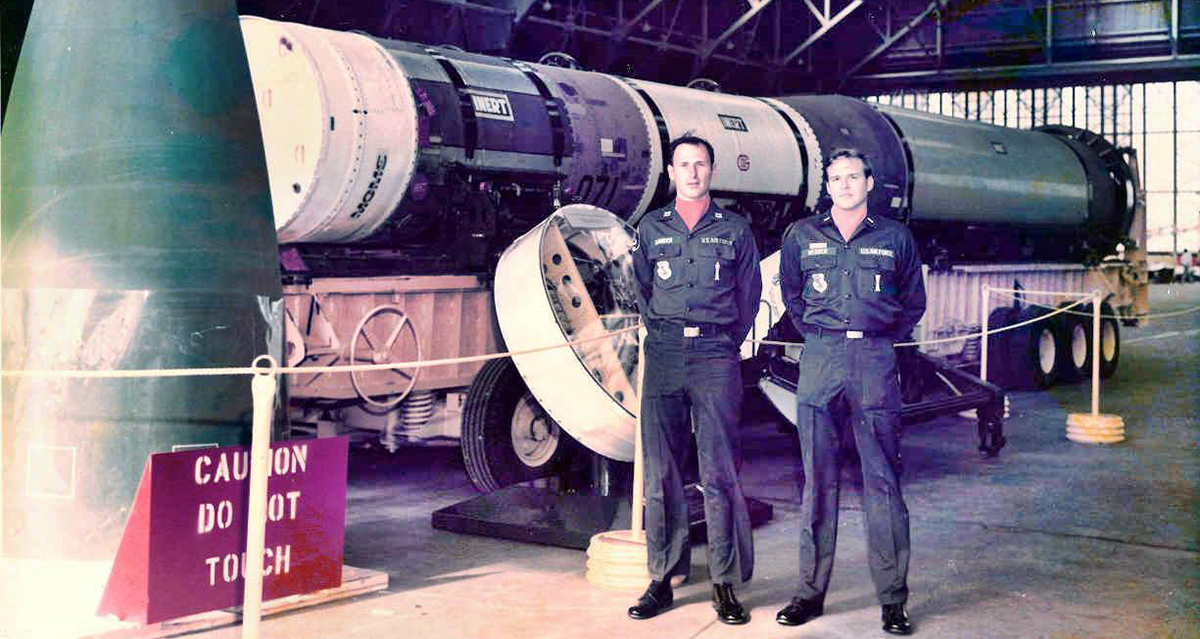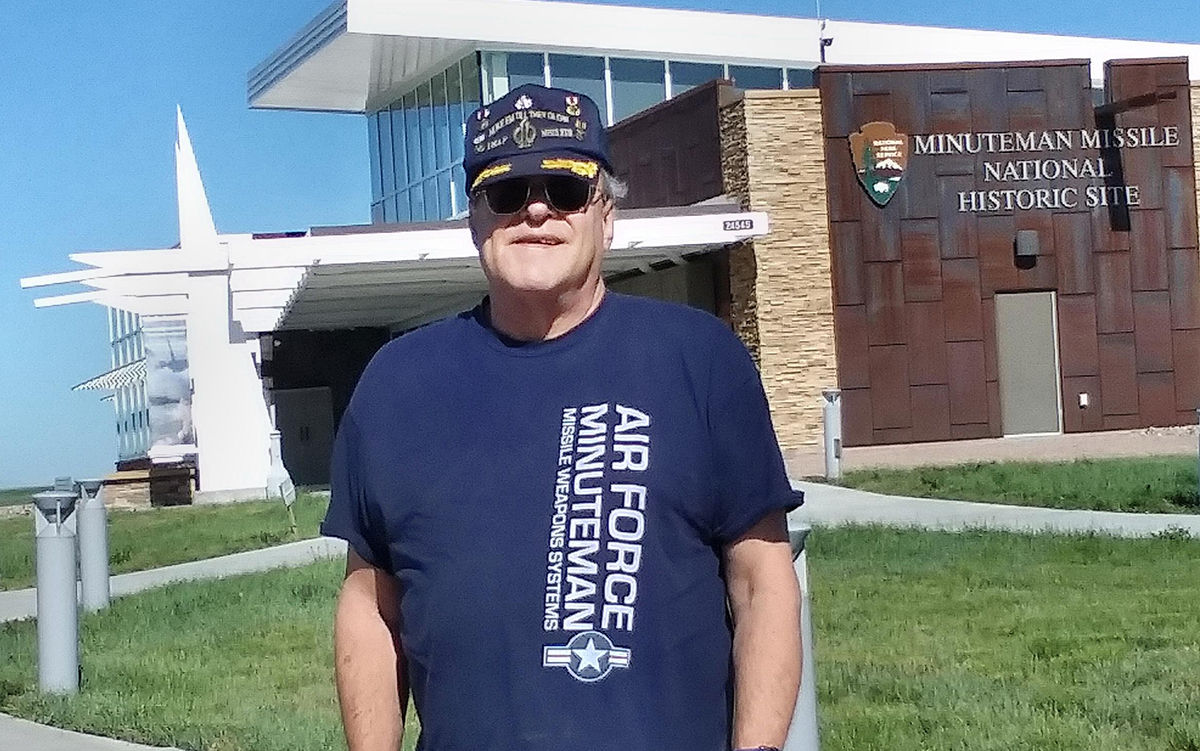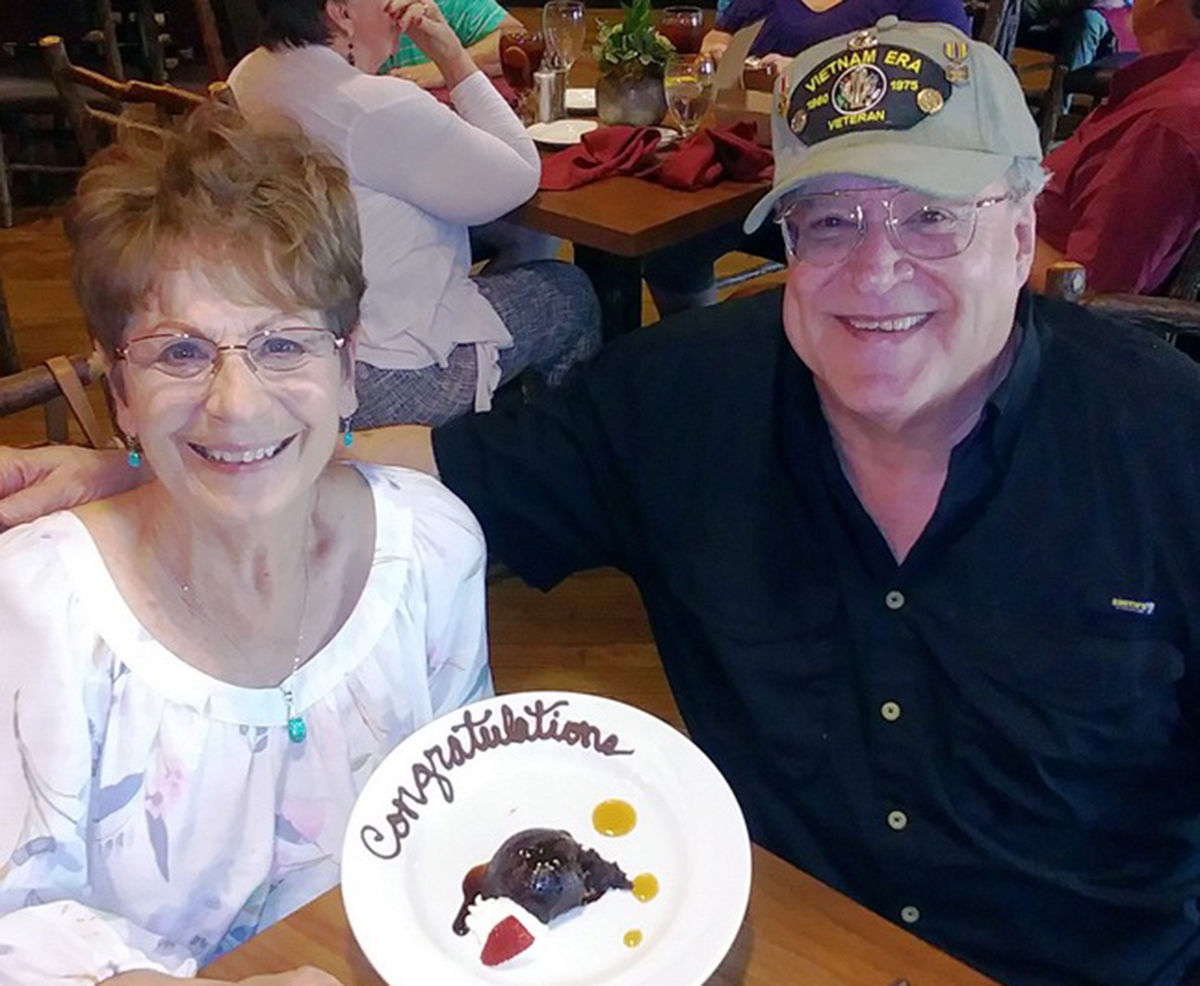Vital Role
Maj. Jim Webber’s career in military service reached impressive heights

(Maj. Jim Webber, ba ’72, (right) and Capt. Rich Sanders, pose next to a Minuteman III missile as they were special guests at Armed Forces Day at Hill Air Force Base in 1975. Photo submitted)
From The Ichabod - Fall 2023
By Annie Flachsbarth
On the heels of the space race, Maj. Jim Webber's story seems plucked from a Cold War novel. It is a tale of humble beginnings, coupled with grit, determination and a dedication propelling him to unimaginable heights.
Webber, ba ’72, graduated from Leavenworth High School in Leavenworth, Kansas, in 1968. His grandparents lived in Topeka and offered him free room and board to attend Washburn University – an offer too good for Webber to pass up. As luck would have it, another life-changing offer was just around the corner. One afternoon at a career fair, he joined the Air Force ROTC after being swayed by a scholarship and a $100 per month stipend for his remaining two years of college. This decision set the stage for the rest of his career.
In May 1972, he graduated with a degree in biology and was commissioned a second lieutenant in the Air Force. He and his wife, Suzy, moved to Vandenberg Air Force Base in California for his first assignment as a Minuteman I missile launch officer. For the next four years, at the height of the Cold War, he served this role with Strategic Air Command with 200 missiles in Nebraska, Colorado and Wyoming under his charge. Webber served a staggering 201 times on alert, 60-feet underground, ready to launch nuclear missiles if the order came through.
“The Soviet Union had 1,600 missiles aimed at us, and we had 1,054 aimed at them. With enough power in my wrist to turn the key and decimate millions of people in less than 30 minutes, it was a different kind of important,” Webber said. “Many think those nuclear weapons were all bad. But the deterrent part is what kept us from using them for nuclear war, and I played a part in that.”
Soon after, he was selected as one of the first missile combat crew members to transition to the Minuteman III system, the newest nuclear missile system in the world at the time and a huge step forward in operating and targeting capabilities.

After his four years of missile duty, Webber transitioned into a little known and evolving career in space systems operations. He left a permanent mark on the American military landscape by contributing to the development of PAVE PAWS, a strategic radar early warning system that greatly improved the effectiveness of the U.S. defense system. The $130 million system was designed to provide warning in the event of a sneak attack by submarines. His test team of six Air Force members thoroughly evaluated the system – much like test pilots would check out a new aircraft – and then provided “go” or “no-go” recommendations to NORAD and Pentagon leadership.
After the radar site was declared operational, he became the first training officer for the new unit. In this critical position, he developed the first training program for the system, the fundamentals of which are still in use today.
“Had I accepted the old adage that ‘you can’t teach an old dog new tricks,’ I would still be digging ditches like I had to do to pay my way through college,” Webber said. “That’s something I learned from Washburn – to be adaptive and to put your ego in your back pocket and be open to learning new things.”
Webber's career wasn't limited to missile and radar systems. He was appointed the first ground-based sensor training officer at the 1st Space Wing headquarters at Peterson Air Force Base in Colorado. This wing transitioned space operations and missile defense to the newly established Air Force Space Command. Webber was promoted to major and was the first Air Force Space Command liaison officer at RAF Flyingdales in Great Britain.
Webber worked with sophisticated systems and developed an understanding of mission, purpose, team effort and leadership.
“Reflecting back on my time serving my country, it dawned on me – I would never be responsible for anything that important ever again,” Webber said. “Nothing after that could ever match it.”
Upon retiring from the Air Force, he worked as a civilian employee for the Army and shared his experience as an adjunct professor of technology and science at three universities.
“All of these things happened for a reason, and I owe a lot of that to Washburn,” Webber said. “I graduated there, met my wife in Topeka, I joined ROTC, and I ended up seeing the world and having a wonderful career. I was an 18-year-old, know-nothing Kansas country boy who ended up doing something much more important than myself.”

(Maj. Jim Webber (right) and Suzy Webber celebrate their 50th anniversary in 2022. Photo submitted)